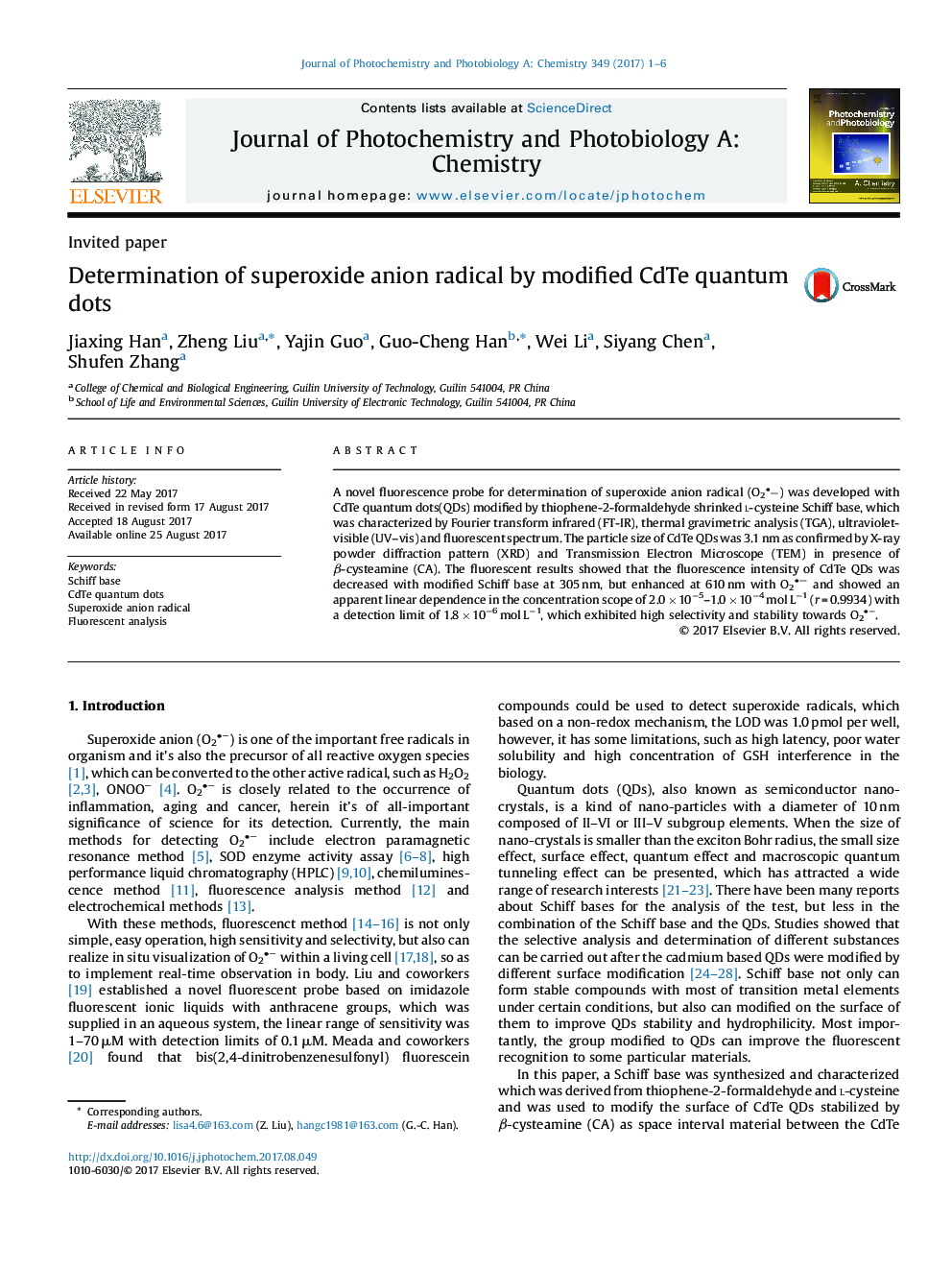| کد مقاله | کد نشریه | سال انتشار | مقاله انگلیسی | نسخه تمام متن |
|---|---|---|---|---|
| 4753763 | 1417591 | 2017 | 6 صفحه PDF | دانلود رایگان |

- A novel fluorescence probe was designed for determination of superoxide anion radical.
- The fluorescence probe was based on l-cysteine Schiff base and CdTe quantum dots.
- The fluorescence probe has a high selectivity towards O2â.
- The Schiff base was served as spacer molecule for fluorescence assay.
A novel fluorescence probe for determination of superoxide anion radical (O2â) was developed with CdTe quantum dots(QDs) modified by thiophene-2-formaldehyde shrinked l-cysteine Schiff base, which was characterized by Fourier transform infrared (FT-IR), thermal gravimetric analysis (TGA), ultraviolet-visible (UV-vis) and fluorescent spectrum. The particle size of CdTe QDs was 3.1 nm as confirmed by X-ray powder diffraction pattern (XRD) and Transmission Electron Microscope (TEM) in presence of β-cysteamine (CA). The fluorescent results showed that the fluorescence intensity of CdTe QDs was decreased with modified Schiff base at 305 nm, but enhanced at 610 nm with O2â and showed an apparent linear dependence in the concentration scope of 2.0 Ã 10â5-1.0 Ã 10â4 mol Lâ1 (r = 0.9934) with a detection limit of 1.8 Ã 10â6 mol Lâ1, which exhibited high selectivity and stability towards O2â.
Fig. 6 shows the fluorescence spectra of the Schiff base (1.0 Ã 10â5 mol Lâ1) and the CdTe QDs (1.678 Ã 10â5 mol Lâ1). It can be seen from Fig. 6 that the strongest emission (Fig. 6b) wavelength is at 337 nm (λex = 305 nm, Fig. 6a), due to the closed-loop in the formation of Schiff base and the closed-ring structure which showed excellent fluorescence intensity. And CdTe QDs have significant fluorescence properties, the strongest emission located at 610 nm (Fig. 6d) (λex = 305 nm, Fig. 6c), the emission spectrum is narrow and symmetrical, and the excitation spectrum is broad.105
Journal: Journal of Photochemistry and Photobiology A: Chemistry - Volume 349, 1 December 2017, Pages 1-6